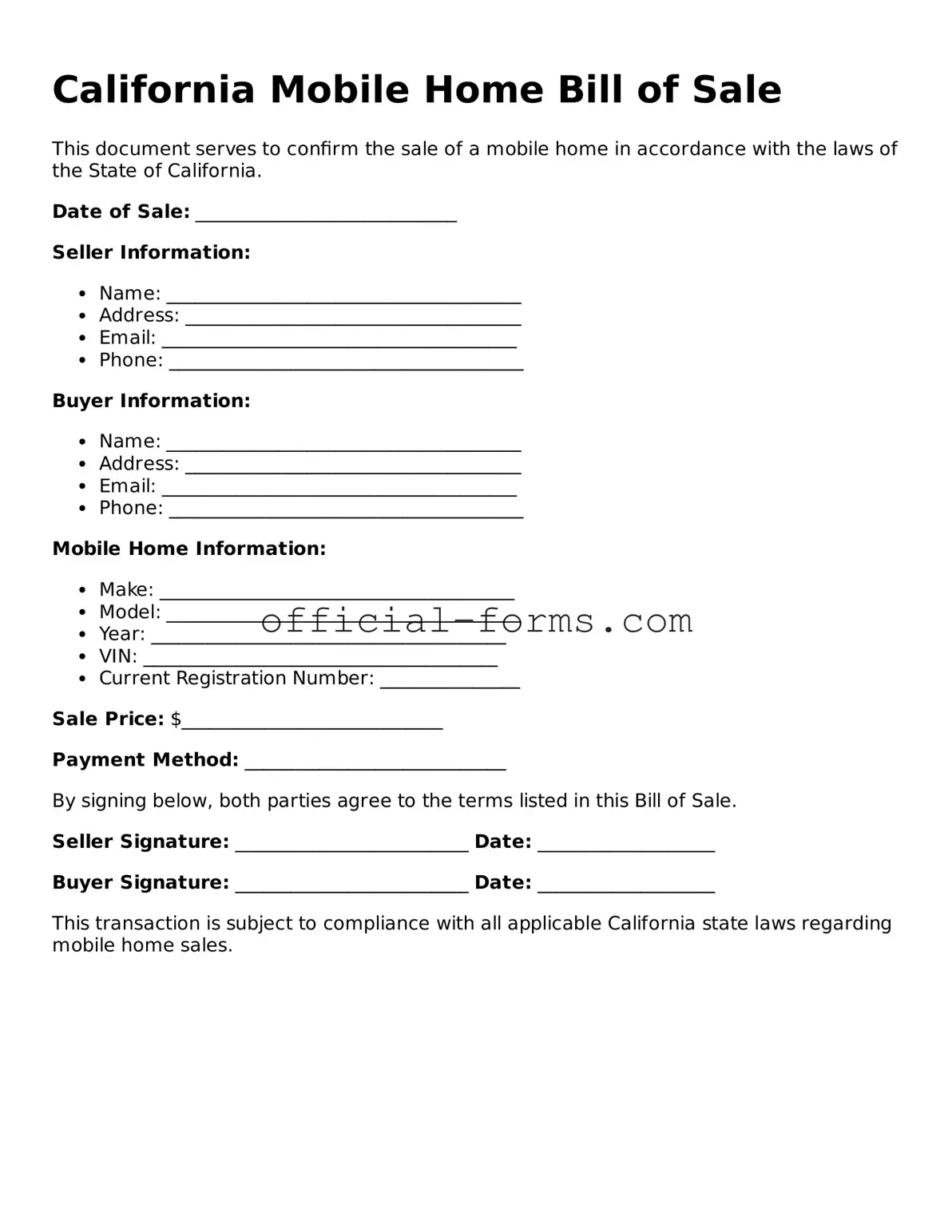When filling out the California Mobile Home Bill of Sale form, individuals often encounter several common pitfalls that can lead to complications later on. One significant mistake is failing to provide accurate information about the mobile home. This includes details such as the vehicle identification number (VIN), make, model, and year. Inaccuracies can create confusion and may even hinder the transfer of ownership.
Another frequent error is neglecting to include the seller's and buyer's complete names and addresses. This information is crucial for establishing a clear record of the transaction. Omitting or misspelling names can result in legal disputes or difficulties in future transactions. It is essential that both parties double-check their personal information before submitting the form.
Many people also overlook the importance of signatures. Both the seller and the buyer must sign the Bill of Sale to validate the transaction. Failing to obtain the necessary signatures can render the document ineffective, leaving both parties without legal protection. It is advisable to ensure that both parties are present to sign the form at the time of the sale.
Additionally, individuals sometimes forget to date the Bill of Sale. A date is critical for establishing when the transaction took place. Without it, proving the timeline of ownership can become problematic, especially in disputes regarding the mobile home’s condition or any related liabilities.
Another common mistake involves the payment details. If the transaction involves financing or any form of payment plan, it is essential to clearly outline these terms in the Bill of Sale. Failing to do so can lead to misunderstandings and disputes about payment responsibilities after the sale is completed.
People may also neglect to include any relevant disclosures about the mobile home’s condition. California law requires sellers to disclose certain information about the home, including any known defects. Omitting these disclosures can lead to legal repercussions and potential claims from the buyer if issues arise after the sale.
Lastly, individuals often do not keep a copy of the completed Bill of Sale for their records. Retaining a copy is vital for both the seller and the buyer. It serves as proof of the transaction and can be helpful in future dealings, such as registering the mobile home or addressing any disputes that may arise.
